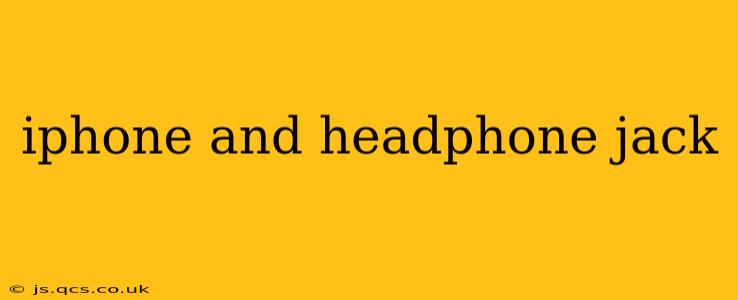The removal of the headphone jack from iPhones, starting with the iPhone 7 in 2016, sparked significant controversy and continues to be a topic of discussion. While Apple cited reasons like creating a thinner phone and improving water resistance, the decision impacted users and fueled debates about design choices versus practicality. This comprehensive guide explores the history, implications, and ongoing relevance of the iPhone's missing headphone jack.
Why did Apple remove the headphone jack from iPhones?
Apple's official justification focused on two key factors: design and technology. They argued that removing the headphone jack allowed for a thinner phone design and improved water resistance. This aligned with their push towards a more minimalist and sleek aesthetic. Additionally, they championed the wireless future, promoting AirPods and other wireless audio solutions as the superior alternative. While these are the stated reasons, the reality is likely a confluence of factors including supply chain considerations, cost-cutting, and a desire to push consumers towards their own ecosystem of accessories.
What are the advantages of removing the headphone jack?
The primary touted advantage, as mentioned above, was a slimmer phone profile. A thinner phone is often perceived as more aesthetically pleasing and easier to handle. Removing the headphone jack also facilitated better water and dust resistance, adding to the phone's durability. From Apple's perspective, this move also strategically pushed the adoption of their own wireless AirPods, generating additional revenue streams.
What are the disadvantages of removing the headphone jack?
The disadvantages are felt most acutely by users. The immediate and most obvious drawback is the loss of the ability to plug in wired headphones directly. This necessitates the use of an adapter (which Apple initially provided but later stopped including), wireless headphones, or USB-C headphones (with later models). This creates inconvenience, extra cost, and potential compatibility issues. Furthermore, wireless headphones require charging, introducing another potential point of failure and inconvenience. The dependence on wireless connectivity also raises concerns about battery life and potential connection dropouts.
What are the alternatives to using a headphone jack on iPhone?
Several alternatives exist, each with its own pros and cons:
- Apple AirPods (or other wireless earbuds): These offer a seamless wireless experience within the Apple ecosystem but require charging and can be costly.
- USB-C headphones: These headphones connect directly to the iPhone's charging port, providing a wired connection without the need for an adapter. However, this means you can't charge your phone and listen to music simultaneously unless you have a special charging hub.
- Lightning to 3.5mm headphone jack adapter: Though initially provided, Apple subsequently removed this adapter from the box, requiring a separate purchase.
- Bluetooth Headphones: A wide range of Bluetooth headphones from various manufacturers are available, offering greater choice and price points than Apple's offerings.
Does removing the headphone jack affect audio quality?
The audio quality depends heavily on the headphones or earbuds used. High-quality wireless headphones can often match or even surpass the sound quality of wired headphones. However, cheaper wireless options may fall short. The digital-to-analog conversion in wireless headphones can introduce some compression or loss of detail compared to direct wired connections in some instances. The quality of the Bluetooth codec also plays a crucial role in overall audio fidelity.
Will Apple ever bring back the headphone jack?
It is highly unlikely that Apple will reintroduce the headphone jack to iPhones. Their strategic focus on wireless technology and design choices strongly suggests this feature will remain absent. The transition to wireless has, for better or worse, become a permanent shift in Apple's mobile device strategy. While user feedback remains significant, Apple's path seems firmly set on wireless audio solutions.
Conclusion:
The removal of the headphone jack from iPhones was a bold, and for many, controversial decision. While it offered design and technological advantages for Apple, it presented practical challenges and inconveniences for users. The choice reflects a strategic push towards a wireless future, but the debate over its practicality and impact continues to resonate within the tech community and among iPhone users.
